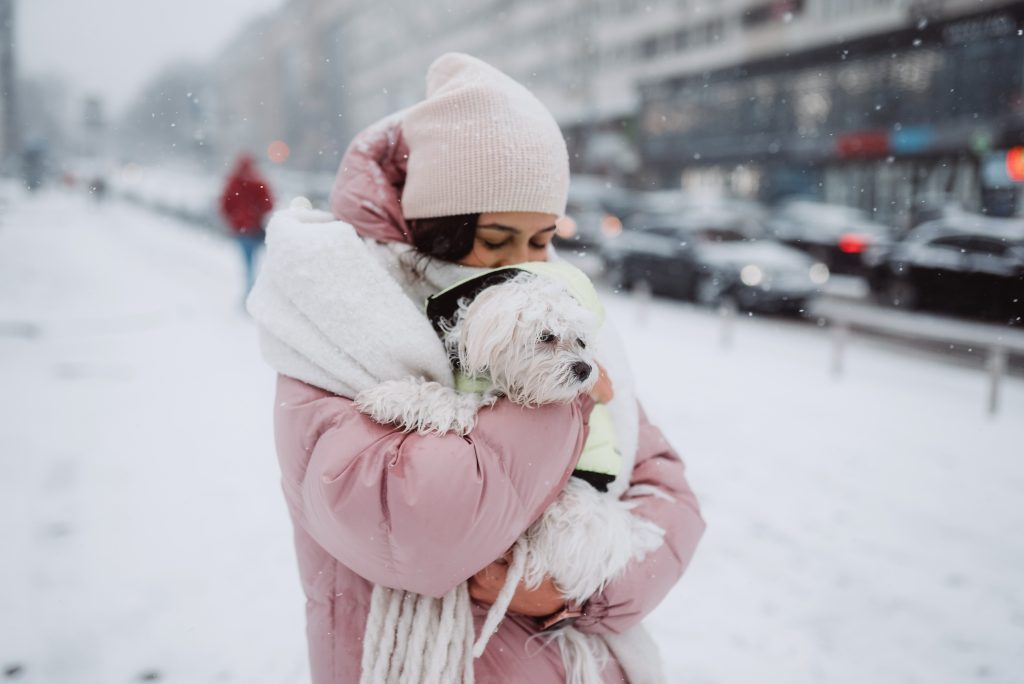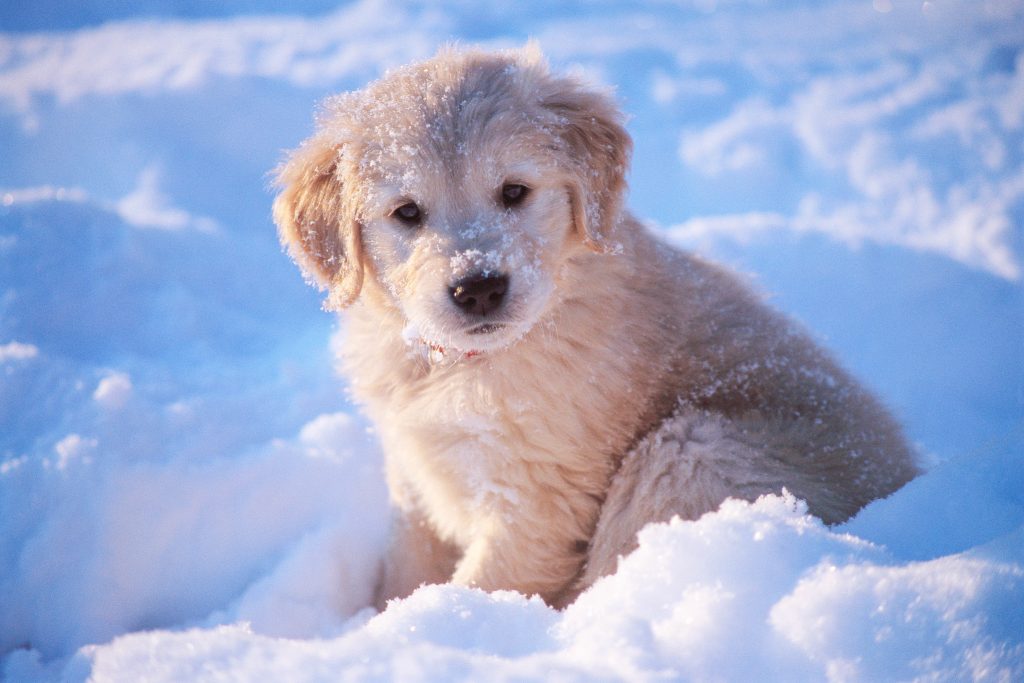Dogs in the snow: how to protect them?
Dogs in the snow: With winter upon us, many places are covered in a snowy blanket. If we are warm and do not suffer from the cold we can have a really good time playing. Well, the same thing happens to dogs in the snow, some enjoy it! So if we are going to have a great time with our pet in a snowy area, take these tips.

Tips for being with dogs in the snow
Indeed, dogs are not as cold as we are, but it is important to know how cold a dog can endure according to its size and weight and to protect them against it. In addition to this, there are other considerations that you must take into account. Let’s go one by one!
1. Protect him from the cold
As we said before, whether a dog handles low temperatures better than another will depend on many factors: its weight and size, the length of its hair …
Some dogs come from very cold places, such as the Siberian Husky or the Bernese Mountain Dog, and they become the kings of the snow. These are very well prepared, as they have a layer of insulating body fat and a very thick coat.
On the contrary, in general, the dogs that need more protection are:
- Short-haired or hairless dogs
- Puppies
- Older dogs
- The most sensitive dogs
- Small dogs, such as the Chihuahua or the Yorkshire
- Sick dogs
To protect these dogs from the cold, it is best to use coats adapted to their size and that is waterproof.

2. Take care of your pads
Although the skin of dog pads is harder than our skin, they can also be affected by cold and crack. This will cause you great pain and prevent you from moving freely.
Therefore, it is necessary to protect their legs during winter walks, especially if you are with the dogs in the snow.
There are waterproof shoes adapted for dogs that can serve to protect them from both snow and hot floors. However, these are not comfortable for all animals.
In such cases, it is best to coat the pads with paraffin or slip wax protectors before starting on snow rides.
Then, when you return home, you have to dry your paws well and use a moisturizer for dogs to hydrate the pads and repair the area, soothing the small scratches.
On the other hand, make sure that your pets do not lick their paws when they are in the snow. The salt that is sometimes sprinkled on it is not good for animals, so they should not put their paws in their mouths.
3. Keep an eye on your pet
When we release the dogs in the snow, the vast majority go crazy with excitement and start running and jumping from one place to another. And, just as if there were no snow, they will start sniffing everything and following scent tracks.
For this reason, it is very important to keep the dog under control and not lose sight of it. It is even recommended, if the area in which you are going to walk with your dog is very wide, that you wear a collar with GPS locators to keep it located at all times if it gets lost.
Think that if it gets lost in a place with very low temperatures and it takes a long time to find it, it could be fatal.
4. Don’t eat the snow!
One of the reasons that cause more deaths during the winter and that is related to snow is antifreeze poisoning, as these are highly toxic.
Due to this, in the same way, that we must prevent them from licking their feet due to the salt, we must also prevent them from swallowing the snow.
Also, antifreeze can have a very attractive smell to them that can make them want to try it. So extreme vigilance.

5. Hydrated
In winter, with the drop in temperatures, many people neglect their hydration because they are less thirsty. Therefore, be very careful with neglecting the hydration of your dog.
They need to always have clean water at their disposal, hot or cold. And even more so if it is about dogs in the snow that do not stop still!
In addition, providing your pet with water will also prevent him from wanting to eat the snow to hydrate himself and end up intoxicated, as we said before.
6. Dry him well when you get home
When you return home after having spent some time in the snow, the temperature of the home must be warm, but not too high. The contrast could make you and your pet sick.
Take off your dog’s coat and towel dry his hair if you notice that it is wet. If your dog is shaking a lot, you can use the dryer in a medium setting. Then, put a clean and dry coat on him if he is a very cold dog like the ones we mentioned at the beginning.
And remember to slather a moisturizer on your pads if they have cracks!
7. Does your dog, not like snow?
Although many dogs enjoy the snow, some do not enjoy it at all. Therefore, if you detect discomfort in your pet when placing it on cold and wet snow, it is best not to give it a hard time.
If not, the dogs in the snow can have a great time. However, the right thing to do is to take into account all these tips that we have listed so that the fun does not turn into setbacks.